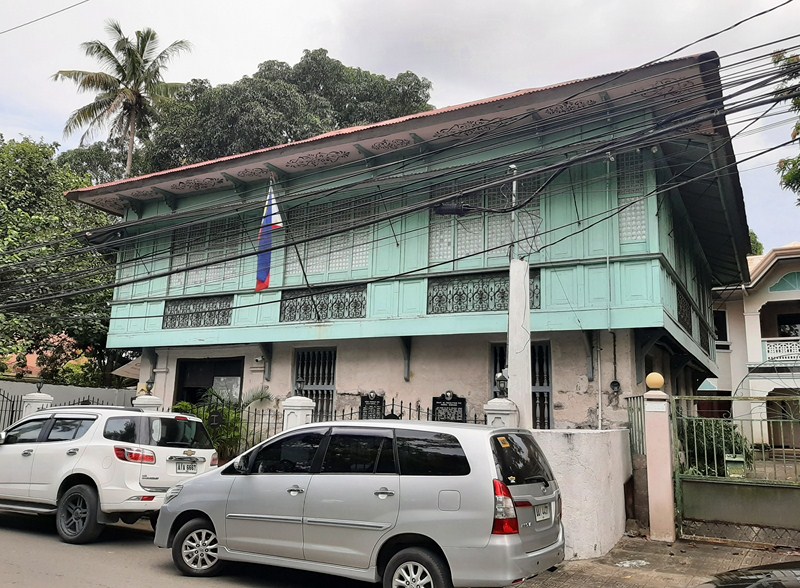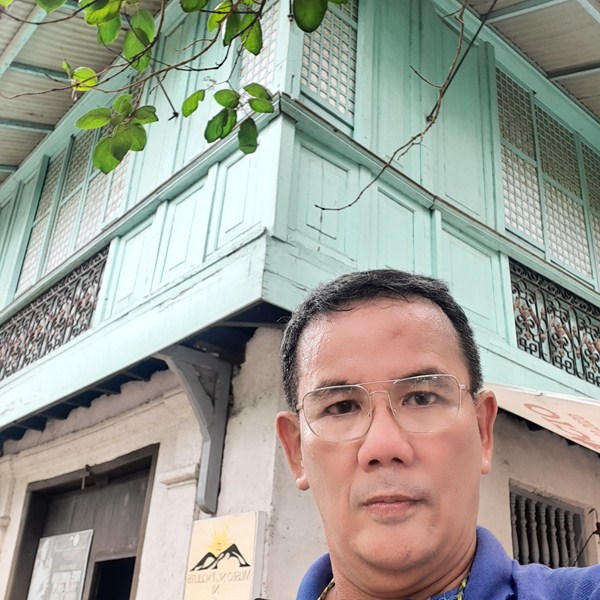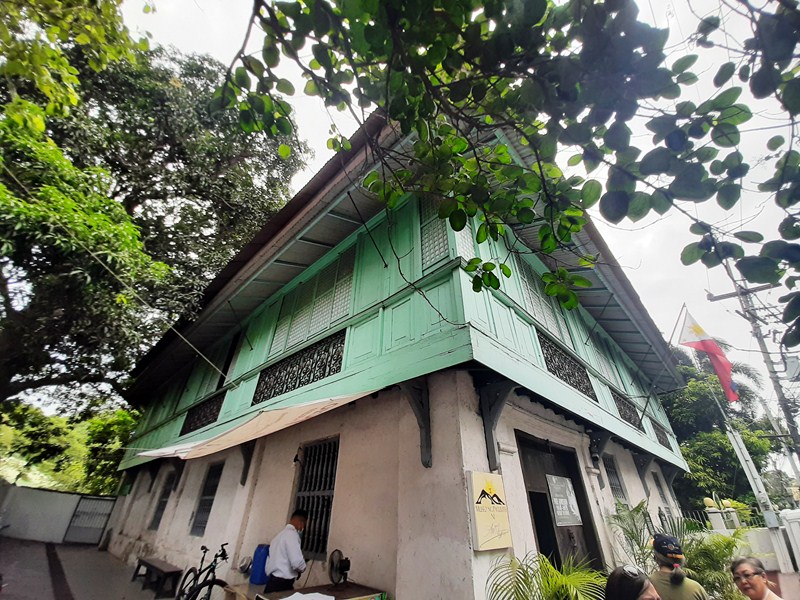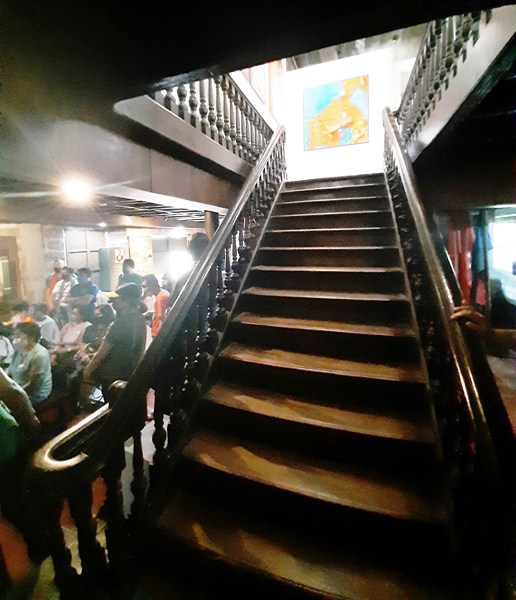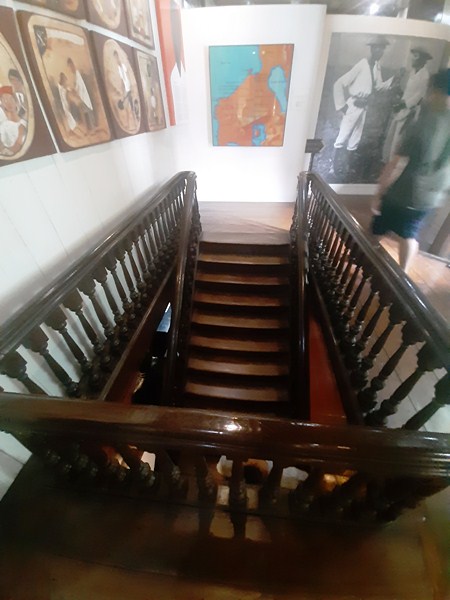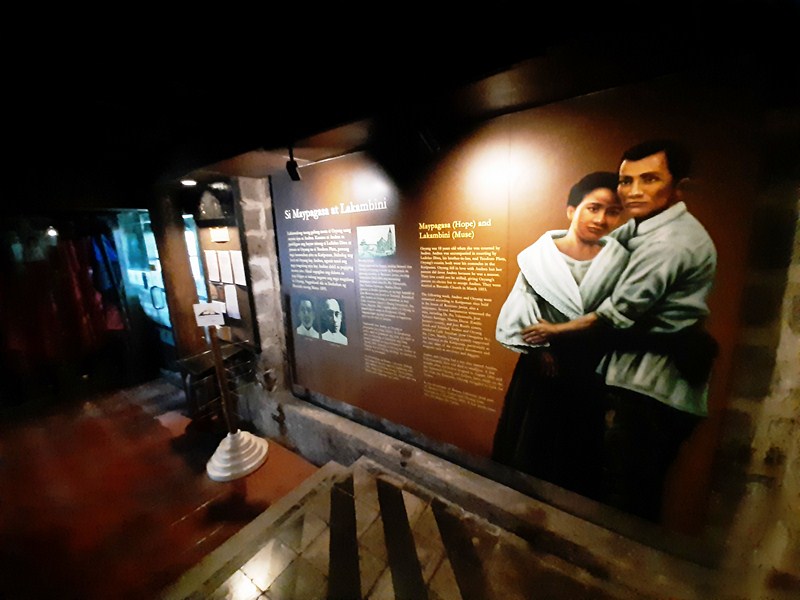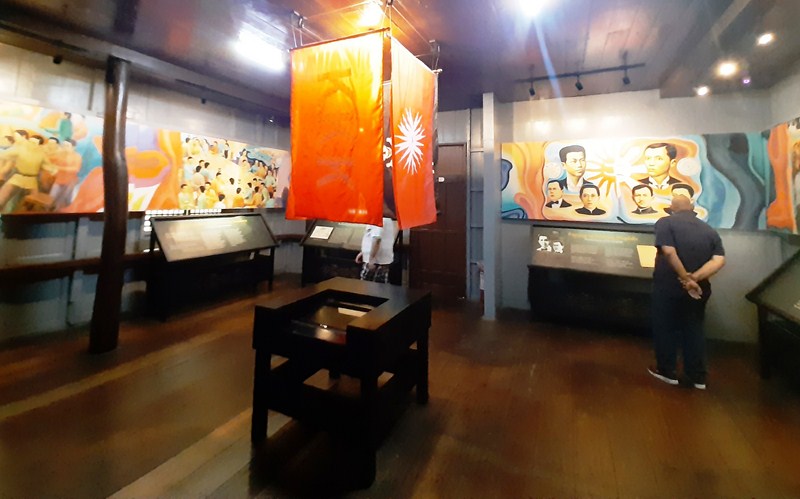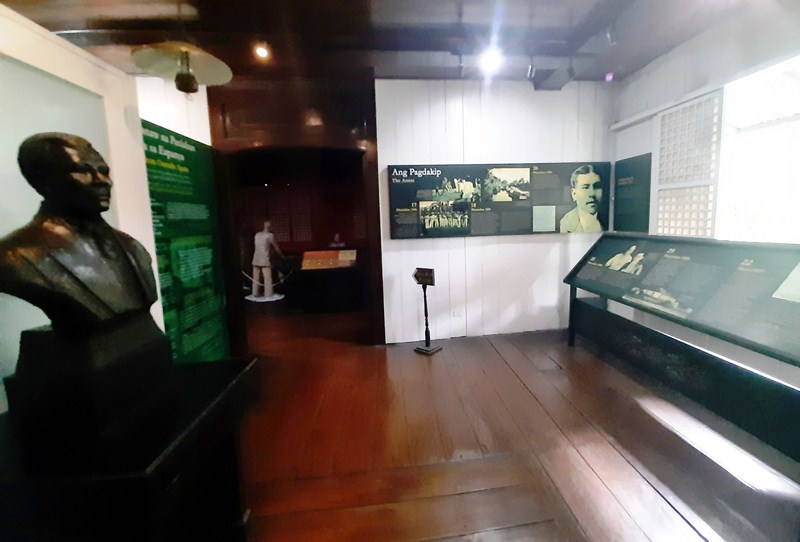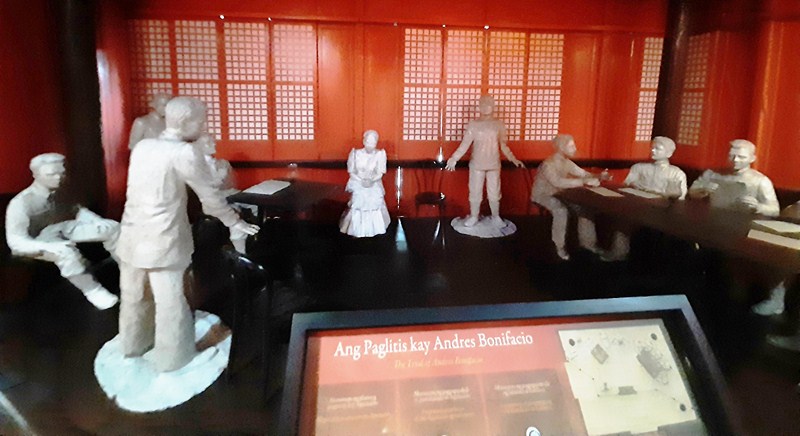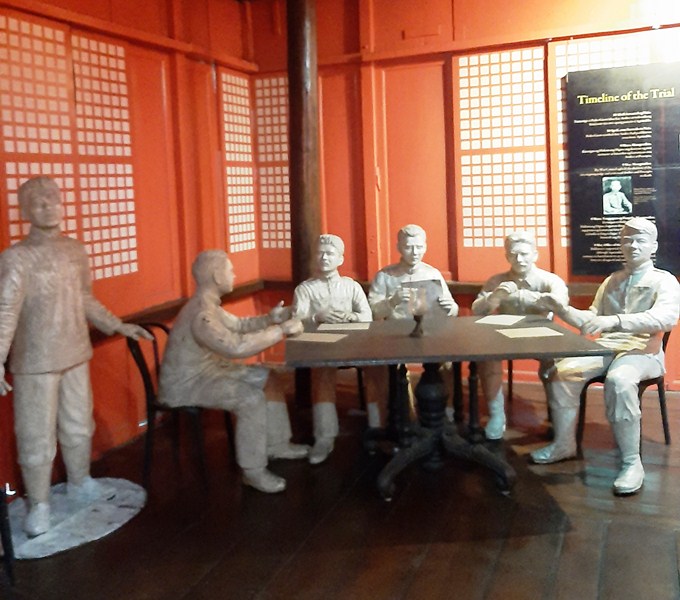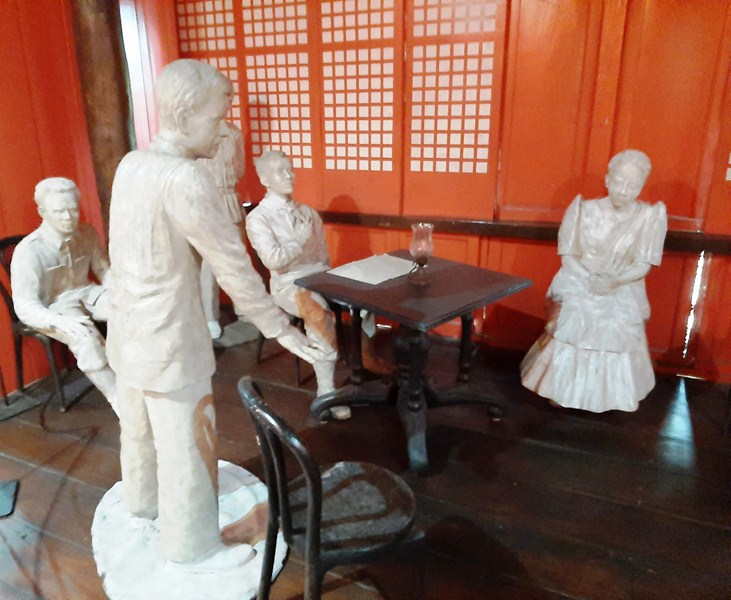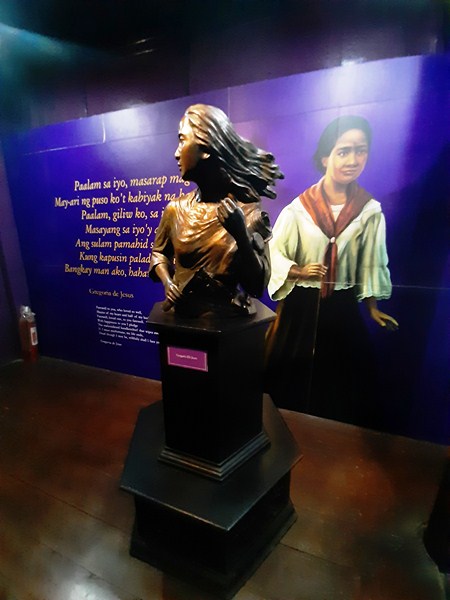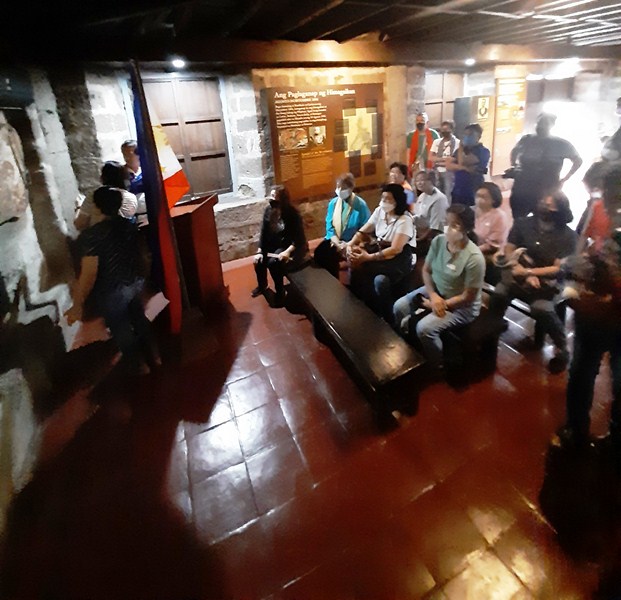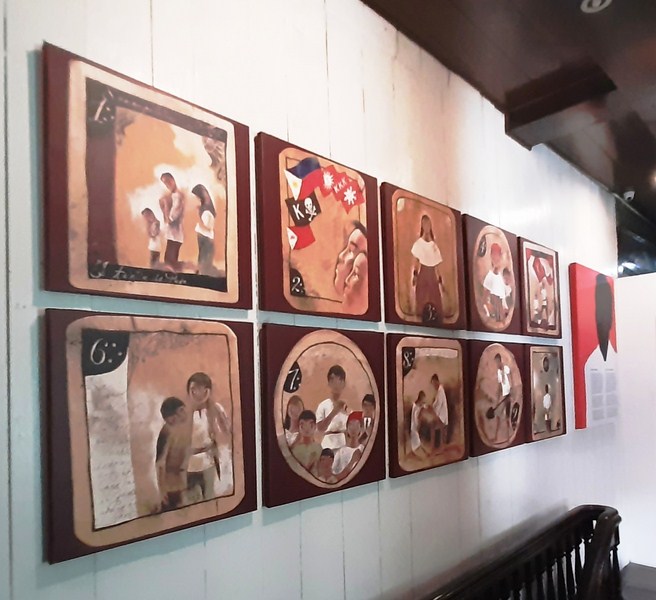Part Two of “Drive, Dine and Discover” Cavite Caravan
After our visit to the Church of the Assumption of Our Lady in Maragondon, we were next driven about 500 m. to the nearby Bonifacio Trial Museum.
This would not be my first viist to the museum, having visited it during my 2017 visita iglesia of Cavite. However, since it was a holiday, the museum was closed. This would be my first time to explore its exhibits.
Check out “VIsita Iglesia 2017,” “Bonifacio Trial Museum (2017)” and “Church of the Assumption of Our Lady”
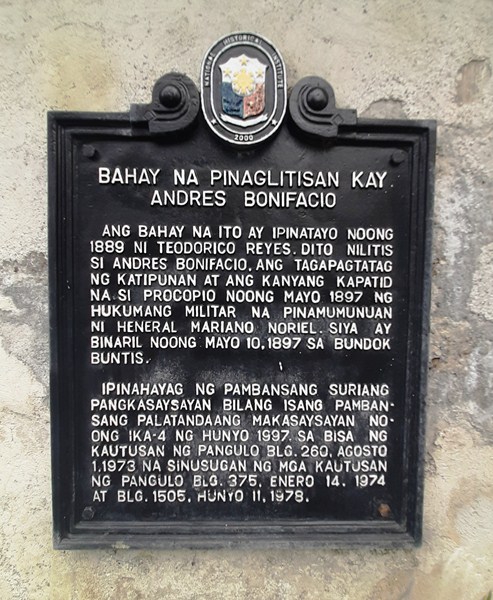
Historical plaque installed by National Historical Institute (NHI) in 2000. The name “Teodorico” should be “Roderico”
This two-storey bahay-na-bato (stone house), formerly known as the Roderico Reyes House, was built in 1889 by Roderico Reyes (not Teodorico as stated in NHI plaque by the front door) who was married to Juana Viray. From May 5 to 6, 1897, it was the site where revolutionary leader and Katipunan Supremo Andres Bonifacio and his brother Procopio Bonifacio were court martialed by a military court, presided by Gen. Mariano Noriel, and found guilty of treason and recommended execution.
Gen. Riego de Dios and Col. Crisostomo Riel, both natives of Maragondon, refused to sign the final court judgment. Reyes was absent during the trial as he was in his mountain retreat.
This stone, brick and wood ancestral house now belongs to Mr. Jose Angeles (it was sold to him by Reyes descendants in 1994) who generously signed an agreement with the NHI to turn it into a museum open to the public. It was designated, on June 4, 1997, as a National Historical Landmark by the National Historical Institute and, in 1999, it was fully restored and declared as a National Heritage Site.
On November 28, 2014, it was formally inaugurated as a museum and shrine called the Museo ng Paglilitis ni Andres Bonifacio or Bonifacio Trial Museum, administered and managed (the third in Cavite) by the National Historical Commission of the Philippines (formerly the National Historical Institute).
The 80 sq. m. museum has five galleries. Gallery 1 (Maypagasa) provides a short background on Andres Bonifacio and the Katipunan.
Gallery 2 (Pagsalubong) focuses on the conflict between the two Katipunan factions in Cavite, the Magdalo and Magdiwang.
Gallery 3 (Pagdakip) narrates the events leading to Bonifacio’s arrest, by Col. Agapito Bonzon and Maj. Jose Ignacio “Intsik” Paua, in Barrio Limbon in Indang. Bonifacio was wounded when he shot in the arm by Bonzon and stabbed in the neck by Paua. Andres’ brother Ciriaco was shot dead.
Gallery 4 (Ang Paglilitis), at the living room (sala de visita), re-enacts the Bonifacio brothers’ court martial through a light and sound presentation. The audio recording of the interactive diorama, with dimmed lights adding to the gloomy atmosphere, recounts the trial proceedings.
Life-size, polyester resin 3D figures represent members in this tragic event – Gen. Mariano Noriel, Col. Crisostomo Riel, Col. Tomas Mascardo, Col. Esteban Ynfante, Col. Mariano Riego de Dios, Sulpicio Antony, Placido Martinez (Bonifacio’s attorney), Procopio Bonifacio, Gregoria de Jesus and Andres Bonifacio (seated in a Vienna-style love chair).
Gallery 5 (Kadakilaan) recounts the anguish of Bonifacio’s widow, Gregoria de Jesus, upon learning of her husband’s death. It has a replica of a statue of Gregoria de Jesus sculpted by Julie Lluch.
This modernized museum contains various interactive displays on events that led to the trial and execution of Bonifacio and the special bond he shared with his young wife Gregoria de Jesus. An electronic map shows the 12 Cavite towns under the Magdiwang, while 10, including the town of Bagumbayan (now Laurel) and Talisay in Batangas province, belong to the Magdalo . It also has an audio-visual corner offering a brief documentary about the trial and death of Andres Bonifacio and an e-learning room for online lessons on the history of the Philippines.
At the museum foyer is a replica of bust of Andres Bonifacio sculpted by Julie Lluch in 2014. Past the staircase is a wall lined with artworks on the 10 commandments of the Katipunan painted by Robert Alejandro.
Bonifacio Trial Museum: Col. Crisostomo Riel St., Brgy. Poblacion 1-A, Maragondon 4122, Cavite. Mobile number: (0969) 516-6992 and (0917) 553-7375. Museum curator: Mr. Melanio Guevarra. E-mail: mpab@nhcp.gov.ph and bonifaciotrialmuseum@gmail.com. Open Tuesdays to Saturdays, 8 AM – 4 PM. Admission is free.
Maragondon Municipal Tourism Office: G/F, Municipal Bldg., Brgy. Poblacion 1-A, Maragondon, 4112 Cavite. Tel: (046) 686-3139. Mobile number: (0926) 237-6537.
Automobile Association of the Philippines (AAP): AAP Tower, 683 Aurora Blvd., Quezon City 1112. Tel: (632) 8723-0808 and (632) 8705-3333. Website: www.aap.org.ph. E-mail: info@aap.org.ph.
AAP Lakbay, Inc.: G/F, Sea Tower Bldg., 332 Roxas Blvd. cor. Arnaiz St., Pasay City. Tel: (32) 8551-0025 and (632) 8403-543. E-mail: aaplakbay.caravan@gmail.com. Coordinates:
14.5456531, 120.9914728.

